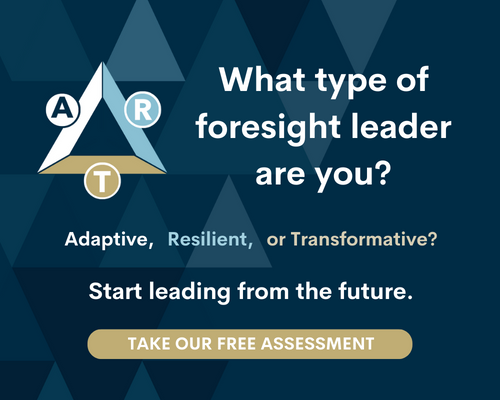Strategies for Transportation Resilience

Author’s Note: (In the process of writing this piece on the future of transportation, I decided to focus on the effect that new personal transportation and disruptive mobility technology choices will have on strategies for transportation resilience.)
Predictions about the transportation industry are rife with extremes and contradictions. Can autonomous vehicles make up the vast majority of more last-mile deliveries but also bring an end to congested streets? People look forward to traveling in their personal drones, yet only 37% of private owners are willing to give up their cars. Many experts note that transportation infrastructure in the United States will likely require an additional $2 trillion to maintain due to the changes on the horizon. On the other hand, others consider our infrastructure to be complete – or at least sufficient for our transportation needs – and so they pressure legislators to direct spending elsewhere. This stresses our transportation resilience – the ability for transportation to run normally or adapt to change on-demand, both during and after any natural disruption or man-made disaster.
Historically, transportation resilience and planning were based on the last known worst-case situation. When transportation failed, a new plan would be drawn up and put in place. Reliance on technology advances have exposed us to new risks and vulnerabilities. Perhaps the complexity of our transportation systems will reach levels that the human mind can no longer comprehend through traditional approaches. Are we already there?
Relief strategies have evolved from traditionally being government-led to involving more private sector responses. Connecting transportation systems with social platforms seems obvious albeit over-prioritized. For example, relying on Facebook for disaster communications is not a recovery plan. All the while aging transportation, communication, energy, and health care infrastructure are in danger of collapsing within the next 20 years.
“More of the same” transportation planning often means heading to free and extensive “multi-modal” systems. Incremental thinking would make personal vehicles obsolete and increase ride-sharing and public, autonomous cars. Transportation resilience is still at the mercy of prices and conflicting priorities. Aging populations and higher concentrations of people are vulnerable to erratic weather conditions and climate changes. None are satisfied by automated responses.
Leadership from today’s developing regions are demonstrating the benefit of more provocative thinking that leap-frogs traditional technology practices. Costs of climate change, rising sea level and coastal damages are driving their resolve. Combining community strengths with emerging technologies may result in the greatest economy of efforts by the second-half of the 21st century.
Resilience due to solution intensity has a marked techno-economic focus. Yet, after 2040, the current transportation systems will seem quaint. Connecting community strengths with yet-to-be imagined technologies will enable us to build real systemic resilience to emergencies and disasters. Planning and implementation that rely on successes of high-disruption technology (i.e. heat-detecting drones) can enable new point-of-use services. Automation may also
coordinate decisions across transportation and energy grids creating a 4D-solution experience. New technologies, energy sources, and infrastructure prioritize climate-management. Support may become increasingly complex to build, maintain, and upgrade as forces such as aging infrastructure or cyber-threats remain an issue. Sources of trusted solutions combine to create stability amid the mayhem of these emergencies. Personal mobility in the form of drones and small group carriages will do for transportation what smartphones did for communications!
Our next steps include monitoring and exercising testbeds for today’s advancing transportation-related technologies such as IOT, 5G, geospatial technology, and synthetic biology – especially when they converge and mesh with other technologies and cultural norms. Transportation resilience enables our connected well-being, and these systems will also help to prioritize eco-health in order to win both the climate war. Technologies that cause us to question our individual and collective roles will likely open the lucrative doors to the transformation of transportation. This century can see transportation resilience increase by the use of smart technologies that open the door to the growth of smart coordination strategies.

The Future Speaks program is a unique apprenticeship that pairs TFSX alumni with diverse conference speaking opportunities. With a database of hundreds of global events to choose from and over a decade of pitching experience, TFSX serves as your conference concierge, helping you achieve your foresight thought leadership and development goals. Email us for more information.

Robin Jourdan
Ford IT Futurist (retired)
Global Foresight Advisory Council Inaugural Member; The Futures School Miami 2016 Alumna
Robin has been an information professional and research scientist for 30+ years with nearly 25 of those years at Ford Motor Company. She holds multiple degrees including a Professional Certificate in Strategic Foresight from the University of Houston, a Master’s in Library & Information Science from Wayne State University, Master’s in Science from the University of North Dakota, and a Bachelor of Science from the University of Michigan.

